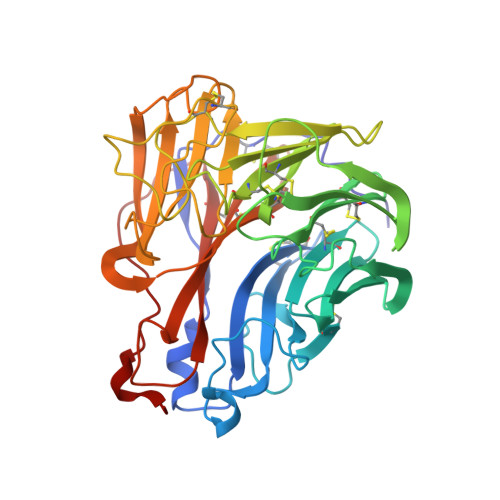Induced opening of influenza virus neuraminidase N2 150-loop suggests an important role in inhibitor binding
Wu, Y., Qin, G., Gao, F., Liu, Y., Vavricka, C.J., Qi, J., Jiang, H., Yu, K., Gao, G.F.(2013) Sci Rep 3: 1551-1551
- PubMed: 23531861
- DOI: https://doi.org/10.1038/srep01551
- Primary Citation of Related Structures:
4K1H, 4K1I, 4K1J, 4K1K - PubMed Abstract:
The recently discovered 150-cavity (formed by loop residues 147-152, N2 numbering) adjacent to the enzymatic active site of group 1 influenza A neuraminidase (NA) has introduced a novel target for the design of next-generation NA inhibitors. However, only group 1 NAs, with the exception of the 2009 pandemic H1N1 NA, possess a 150-cavity, and no 150-cavity has been observed in group 2 NAs. The role of the 150-cavity played in enzymatic activity and inhibitor binding is not well understood. Here, we demonstrate for the first time that oseltamivir carboxylate can induce opening of the rigid closed N2 150-loop and provide a novel mechanism for 150-loop movement using molecular dynamics simulations. Our results provide the structural and biophysical basis of the open form of 150-loop and illustrates that the inherent flexibility and the ligand induced flexibility of the 150-loop should be taken into consideration for future drug design.
Organizational Affiliation:
CAS Key Laboratory of Pathogenic Microbiology and Immunology, Institute of Microbiology, Chinese Academy of Sciences, Beichen West Road, Beijing 100101, China.


















